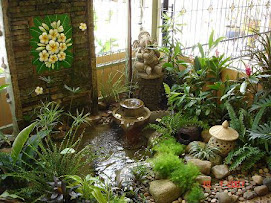Perfumed Aussie Native Garden Plants
Author: Bare Bones Gardener
There is a strong belief among many people, that Australian Natives are beautiful but have no perfume. A stroll through the bush will dispel that rumour easily.
The fragrance of crushed leaves and scented blossoms can be almost overpowering at times. But many of the natives have a more subtle fragrance; you have to be close to them at the correct time to appreciate the flavours and scents.
The perfume of native plants is often produced at different times of the day or night. Perfumed native flowers include many of the Grevilleas (some like G. biternata and G. G. buxifolia have a strong honey-like perfume others like G. buxifolia have a light fragrant perfume), Boronias ( e.g. B. floribunda, B. serrulata and B. megastigma), Sowerbaeas (Vanilla Lilies), Xanthoreas (Grass Trees), Banksias, Eleaocarpus reticulatus (Blueberry Ash) which has a strong almost aniseed scent, Hakeas, Pittosporum undulatum (Native Daphne) -- the perfume of this species may becoming overpowering in the evening --, Leptospermum species (e.g. L. flavescens), Homoranthus species (which has a Baked Biscuit scent) and Hymenosporum flavum (Native Frangipani). Many of the white flowering Eucalypts, Melaleuca and Callistemon species have a strong honey scent.
There are a number of fragrant orchids particularly the Dendrobium species: these tend to be strongest from early morning to the early afternoon. While some of the Cymbidium species such as C. suave have a good perfume during the middle of the day). The Sarcochilus species have what is best described as a spicy aroma.
The aroma released by some plants foliage is not revealed until it has been disturbed, crushed or brushed against. These include the Backhousia citriodora (Lemon Myrtle) which is probably the best of all native lemon scents and is also used commercially as a cooking ingredient, while the foliage of B. anisata is strongly scented like aniseed; Eremophilas, Eriostemon species, Prosantheras,
Leptospermum petersoni (Lemon-scented Tea-tree -- also good as a hedging plant), Darwinia citriodora (a light lemon scent) and some Melaleucas (Paperbarks) also have scents.
Of course you can't forget the Eucalypt family with its famous eucalypt scent, which is redolent of our bushland. But now many other countries are growing vast plantations of them for timber, firewood and revegetation programs on every continent bar Antartica. One species, the E. citriodora gives off a strong lemon-come-eucalypt scent while Agonis flexuosa has a combination of eucalyptus and peppermint scent.
Calomeria elegans has been used as a substitute for lavender. Some species of Boronias also have strongly scented foliage.
And let's not forget the grassy type plants, the lomandra's and the Grass trees, both of which give a lovely honeyed smell when in flower.
So why not think about using some fragrant native plants in your garden. Not only will you get the benefit of supporting your local environment. But you might also get other benefits, like attracting birds, other wildlife and butterflies to your garden.
Article Source: http://www.articlesbase.com



No comments:
Post a Comment